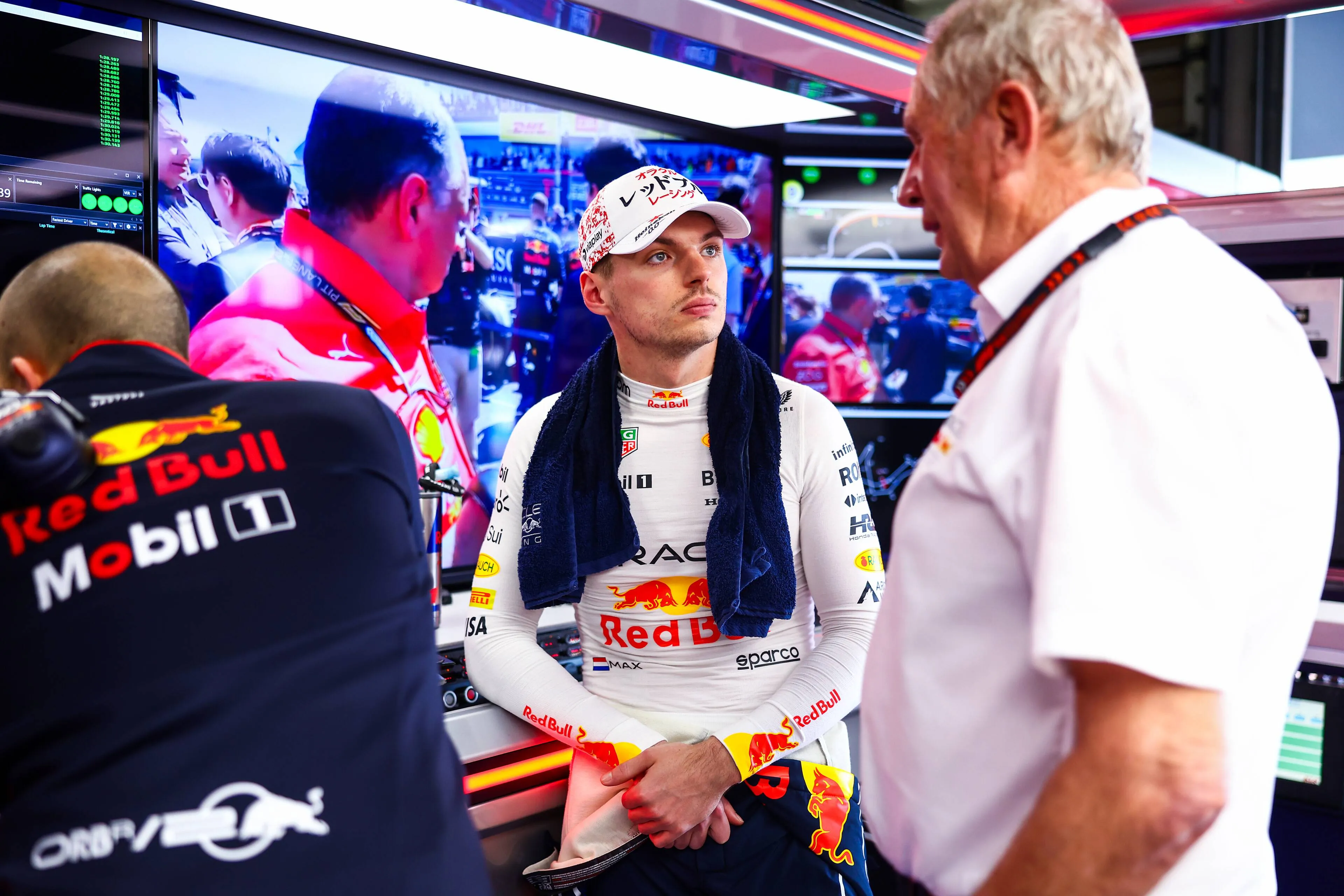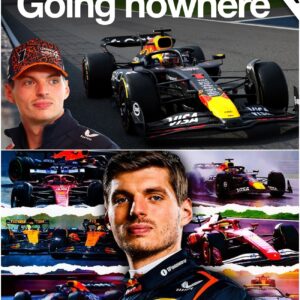Max Verstappen’s F1 Future Secured at Red Bull Through 2026 — What It Means for the Grid Shake-Up
After months of swirling speculation, Max Verstappen’s Formula 1 future has been sealed—he will remain with Red Bull Racing through 2026. This comes after much debate about whether the four-time world champion might take advantage of a performance clause in his contract to jump ship to Mercedes. But thanks to his strong performance at the Belgian Grand Prix, that clause can no longer be activated, ending the speculation—at least for now.
With Verstappen staying put, the much-anticipated domino effect across the F1 driver market, known as the “silly season,” is finally expected to kick off. Teams and drivers that had been waiting on Verstappen’s next move can now begin finalizing deals for 2026 and beyond.

How Verstappen’s Clause Was Neutralized
Verstappen’s long-term contract with Red Bull runs through 2028, but it includes several performance-based exit clauses. One such clause gave him the option to leave for 2026 if he was outside the top three in the Drivers’ Championship standings by the summer break.
Heading into the Belgian Grand Prix at Spa-Francorchamps, Verstappen held an 18-point lead over his closest rival George Russell. That advantage grew to 28 points after a strong weekend, including a sprint race win and a fourth-place finish in the main race, while Russell managed only fifth.
With only 25 points awarded for a race win and no additional bonuses for fastest laps this season, Russell can no longer overtake Verstappen before the performance clause deadline. That mathematically locks Verstappen into his Red Bull seat for 2026—unless Mercedes were to attempt a contract buyout, which appears financially unfeasible and undesirable for all parties.
Mercedes: Russell’s Path Clears
Verstappen’s decision has the most immediate consequences for George Russell. Out of contract at the end of this season, Russell has been engaged in extension talks with Mercedes. However, those discussions were on ice due to the lingering possibility that Verstappen might become available.
With Verstappen staying put, Russell is now free to secure his future with the team. It’s widely expected that Mercedes will lock down both Russell and his teammate Kimi Antonelli for 2026 during the summer break. However, questions remain over the length of those contracts.
Team principal Toto Wolff may want to retain flexibility for 2027, when Verstappen could once again become available if he falls outside the top two in the standings next season. As such, Russell may be offered a “1+1” deal (a one-year contract with an option for a second), while Antonelli—who has struggled recently—could be on a year-by-year evaluation plan.

The 2027 Driver Market: A Powder Keg
While 2026 looks relatively settled, the 2027 driver market is expected to be explosive. That’s when the real game of musical chairs begins.
With the introduction of new technical regulations in 2026, many top drivers—including Verstappen—will be closely monitoring which teams adapt best. Jumping teams during a rules overhaul can be a gamble, as no one wants to commit to a multi-year deal with a team that misses the mark.
Red Bull’s own performance under the new engine regulations remains uncertain. If the team falters, Verstappen’s contract could once again include an exit clause, making him a prime target for rivals like Mercedes or Aston Martin.
Aston Martin is especially intriguing. The team will switch to Honda power in 2026 and has brought Adrian Newey onboard as a technical advisor. With Fernando Alonso potentially retiring at the end of 2026, Aston could have a top-tier seat available for 2027—and Verstappen or Russell could be ideal fits.

Red Bull’s Other Seat: The Yuki Tsunoda Dilemma
While Red Bull can breathe a sigh of relief over Verstappen, questions remain about who will occupy the second seat in 2026. Yuki Tsunoda’s position is increasingly precarious despite some flashes of form, including a strong qualifying at Spa.
Tsunoda has struggled for consistent race results and is currently enduring a points drought. The team’s failure to pit him in time during the Belgian GP potentially cost him a top-10 finish. However, he’s now finally driving with the same floor specification as Verstappen, offering a better platform for direct comparison.
Red Bull has promising junior drivers waiting in the wings. Isaac Hadjar is seen as the most likely candidate for promotion should Tsunoda falter. Meanwhile, Formula 2 standout Arvid Lindblad could also be brought in at Racing Bulls (formerly AlphaTauri) for further grooming.
Team principal Laurent Mekies is said to have a strong working relationship with Tsunoda and may give him every chance to improve. But Tsunoda needs results quickly if he hopes to stay on as Verstappen’s teammate.
What This Means for F1’s Competitive Landscape
Verstappen’s commitment to Red Bull for 2026 gives the team a degree of continuity and stability as it heads into a challenging technical transition. With their own power unit debuting in partnership with Ford, the team has much riding on its 2026 design.
This continuity also benefits new team boss Laurent Mekies, who avoids the potential chaos of losing his star driver in the middle of an engine program reset. Retaining Verstappen gives Red Bull the best possible shot at hitting the ground running when the new regulations arrive.
But it also puts the onus on the team to deliver. As Verstappen has made clear, his long-term loyalty is tied to performance. If Red Bull stumbles in 2026, expect Verstappen to reevaluate—and quickly.
Final Thoughts
With Max Verstappen’s immediate future now settled, the F1 grid can start moving forward. Mercedes can finalize contracts, Red Bull can focus on internal matters like Tsunoda’s form, and the rest of the paddock can start positioning for what is expected to be a pivotal 2027 season.
But don’t mistake this resolution as permanent. In F1, nothing is ever truly locked down. One underwhelming season could reopen doors, unsettle drivers, and completely reshuffle the deck.
For now, though, Red Bull retains its crown jewel—and the rest of the grid must plan accordingly.
Full Video:
